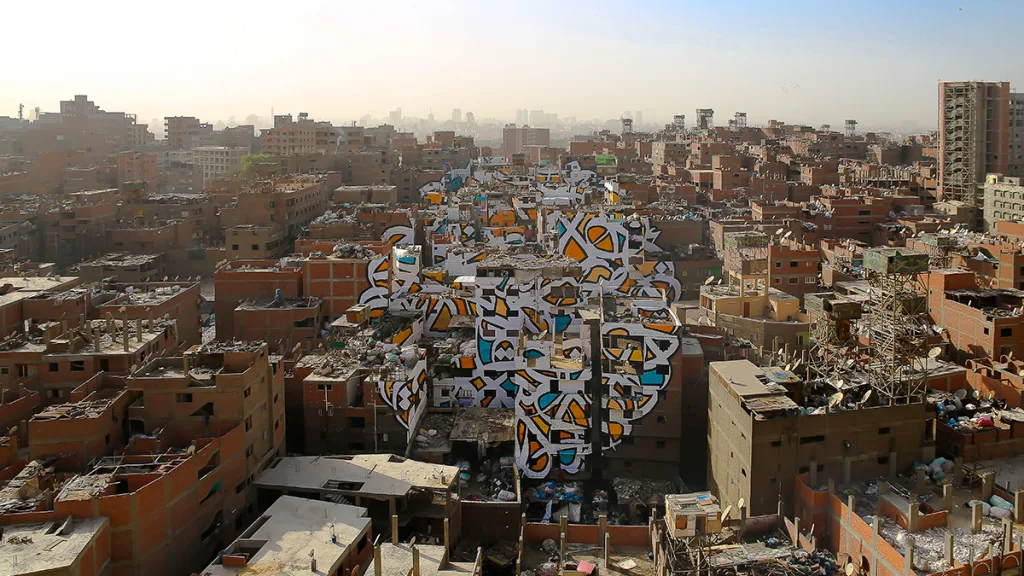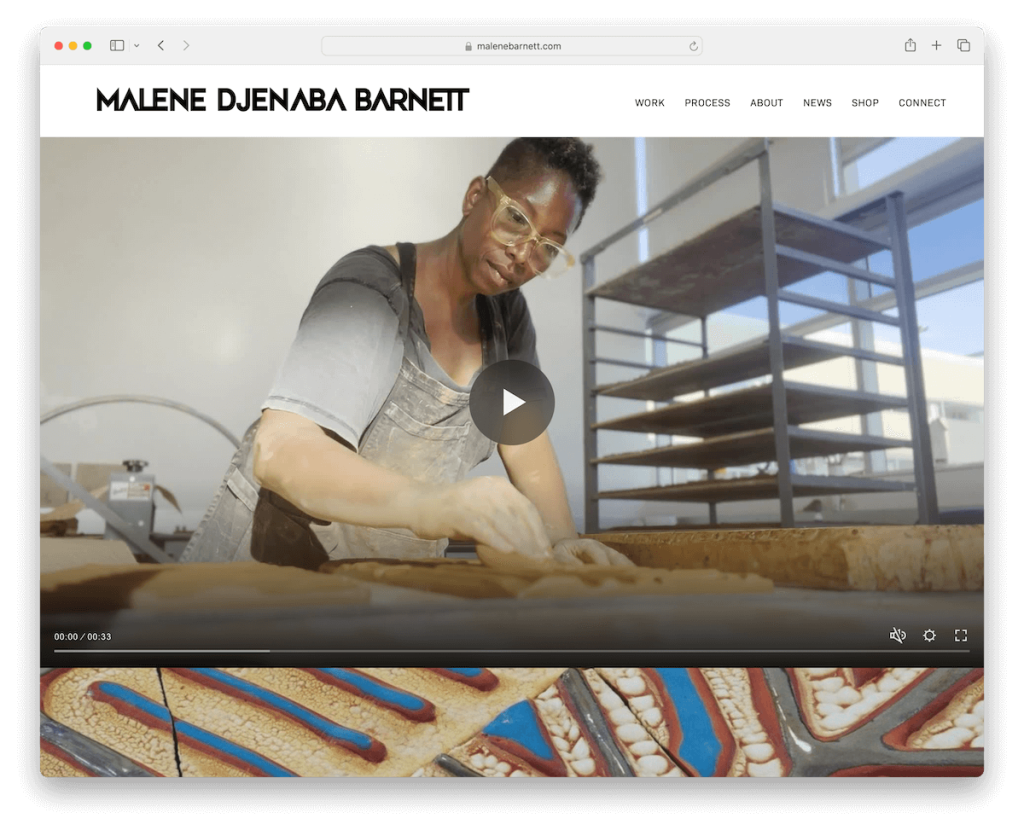Technology has steadily permeated practically every significant sphere of life. It would be nothing short of surprising if the art sector did not catch the technology virus too. Today, technology is redefining and expanding the limits of possibilities for contemporary African artists.
From refining the creative process of artists to eliminating the hassle of geographical limitations in the art market, the presence of technological advancements in the African art scene cannot be overlooked.
The Impact on the Creative Process of Contemporary African Artists
It has been said that unchecked technology could suck the soul out of art. Nevertheless, this does not mean that it is inimical to art entirely. Technology can actually improve an artist’s creative process, not replace it.
Here’s an example to give that some context. Before embarking on his “Perception” project in 2016, eL Seed took advantage of digital tools to plan the entire process. This project involved painting parts of a huge anamorphic piece on almost 50 buildings in the Manshiyat Nasr neighbourhood. The big picture could only be viewed properly from a specific place on the Mokattam Mountain in Cairo.
Sure, it would not have been impossible to execute without technology. However, it would have been very time-consuming for the French-Tunisian Muralist.
Before the advent of 3D printing, sculptors had to employ traditional sculpting techniques to bring their ideas to life. These classic methods presented problems relating to trial and error, scaling, time and material integrity. Consequently, the waste of material and resources was not uncommon.
The application of 3D printing to the creation of sculptures has eliminated most if not all of these issues. Now, the limits to sculpting have become a matter of an artist’s creative imagination.
Improved Education of Contemporary African Artists
The internet has greatly influenced contemporary African artists and will continue to do so. For example, Deviant Art is a virtual community where artists get to showcase their projects, interact and collaborate with artists from other continents. With such a connection to a global community, young artists are exposed to so many creative perspectives. Such exposure could positively impact their creative style.
It is logical that the institutions where contemporary African artists are moulded should reflect the reality of the digital age. With technological advancements like Virtual Reality (VR) and Augmented Reality (AR), young artists can “visit” prominent galleries and art museums around the world at no cost at all. These unprecedented possibilities will definitely widen the scope of their perception of art.
While there are indeed great prospects in terms of education, the digital divide in many African countries makes it impossible to be up to speed with the West. Whether or not this is entirely bad for the African art scene is a matter of perspective as some see it as preserving the raw and authentic nature of African art.
Leveraging technology for Portfolio-building
Before the internet became what it is today, artists had to photograph their artworks individually and bind them all together to build a portfolio. That is, if they even knew they were supposed to create one. When prospective buyers asked to see their work, the artists had to send their portfolios to them and ask to get them back afterwards. Clearly, this method was not convenient.
Fortunately, the internet is to thank again for introducing ease to the process of portfolio-building and sharing for artists. With online platforms like Squarespace, Webflow, Behance and many others, artists can now create portfolio websites. These sites are accessible to anyone and can be shared to prospective buyers. Some artists even use them to sell their art directly.
Contemporary African Art E-Commerce
There’s practically nothing you cannot buy on the internet these days. The internet has drastically revolutionised the way we go about commercial transactions. With just a few taps, you can order some random object from another continent and pay seamlessly.
Even art has not been spared. Although, some would argue that this new way of buying art has taken away the exclusivity factor with regards to print art. However, it is important to note that exclusive and one-of-a-kind art can also be purchased on art-dedicated e-commerce platforms. These platforms include MoMAA, Saatchi Art, Artsy, Artfinder and many others.
Quite a number of galleries are also moving with the times. Some now offer online auctions and virtual exhibitions on their websites to cater to people outside the proximity of their brick-and-mortar structures. By bridging geographical limitations, these platforms afford contemporary African artists a wider range of buyers. The scope of their market extends to the entire globe and within the continent as well.
With all its negative connotations about stealing jobs and killing creativity with over-reliance, technology has been painted as this metaphorical villain. Yet, technology has greatly simplified a lot of processes for us. Ultimately, the key to harnessing its benefits as a contemporary African artist is creating a healthy balance.






